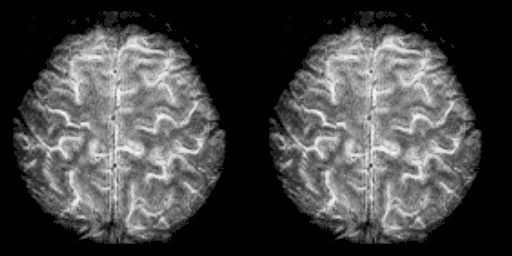Датотека:High Resolution FMRI of the Human Brain.gif
High_Resolution_FMRI_of_the_Human_Brain.gif (512 × 256 пиксела, величина датотеке: 1,06 MB, MIME тип: image/gif, петља, 114 кадрова, 23 с)
Историја датотеке
Кликните на датум/време да бисте видели тадашњу верзију датотеке.
| Датум/време | Минијатура | Димензије | Корисник | Коментар | |
|---|---|---|---|---|---|
| тренутна | 13:47, 23. октобар 2005. |  | 512 × 256 (1,06 MB) | Lipothymia | High Resolution FMRI of the Human BrainDocument Actions 1 mm cubical voxels at 3 Tesla The following images show the results from two functional MRI experiments: The first with voxel dimensions 1x1x10 mm**3 and 1 slice; The second with voxel dimensions |
Употреба датотеке
Следећа страница користи ову датотеку:
Глобална употреба датотеке
Други викији који користе ову датотеку:
- Употреба на en.wikipedia.org
- Употреба на en.wikiversity.org
- Употреба на hu.wikipedia.org
- Употреба на ro.wikipedia.org
- Употреба на uk.wikipedia.org

